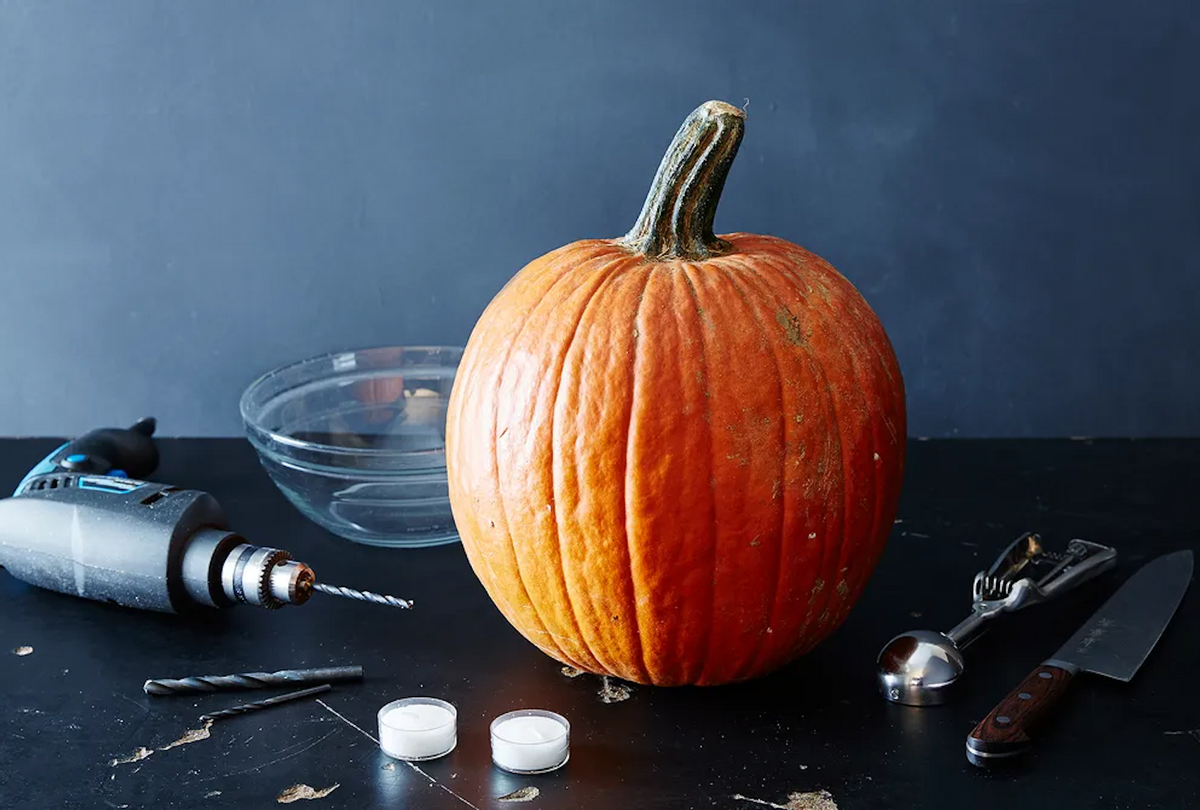Don't be mad at us — we might be thinking about Halloween already. It's just the creeping up of September and some cooling temperatures, we're looking forward to the fall, OK? And with that, comes a new crop of candle scents, seasonal decor, and of course, lots of harvest-season fruits and vegetables ready to be plucked, baked, and carved.
And yes, everyone loves a good jack-o-lantern, but not everyone feels confident about carving a pumpkin. We get it — sharp objects, tough gourds, the whole thing is a little risky. And even if you manage not to lose a finger, there's the question of the artistry itself.
Enter our friends Marc and Chris, also known as the Maniac Pumpkin Carvers, who were happy to show us how the pros do it. They were full of useful facts about fall's favorite squash, and had a bunch of tips for making your jack-o-lanterns last longer.
Here are some we found particularly handy, from how to pick the healthiest pumpkin, to how to carve it using the tools you have — and preserving it so it lasts much, much longer.
As it turns out, pumpkin carving isn't rocket science, but it is useful to have a game plan. Watch the video, and get carving with confidence.
How to pick a winner:
Believe it or not, the best pumpkin carving actually starts in the patch. When looking for the premiere medium for your gourd art (aka the best, healthiest pumpkin), look for firm, unbruised skin. Give it a full twice-over, spinning it to see it from all sides to ensure it's not rotting in any places. The stem provides health clues as well: the greener, the fresher.
Another thing to look out for is the skin thickness — the thicker the skin of the pumpkin, the easier to carve. There are at least two ways to tell how thick the skin is, and it's easy to determine at the time of shopping (so you won't go home with a dud). A pumpkin that feels disproportionately heavy for its size probably has a thick skin, and a thick stem is usually another indication of thick skin.
The tools of the trade:
Always draw out your design with a washable marker. Industrial markers are a big no-no! While these guys use a special fruit carving knife from Thailand, a sharp paring knife or a craft knife will get the job done. And you'll be surprised with what a melon baller can do! (Watch the video to find out.) You'll also want to have a big spoon on hand to scoop out the flesh, a bowl for the discarded pulp and seeds, and lots of newspaper to cover your work surface.
Plus, if all else fails, the pumpkin carving kits you can get at any patch or grocery store in the fall have lots of one-use options that will be helpful for carving out a masterpiece.
Best carving practices:
While most people will carve a hole around the stem before starting to carve, these guys suggest cutting a small hole around the back. When you cut off the stem, you cut off the nutrients to the pumpkin, aka, a terrible plan for longevity.
When you're done carving, spray the pumpkin with diluted lemon juice, which helps to slow down some of the oxidation. Another piece of good advice? Wrap your pumpkin and refrigerate it, until you need to put it on display. Another trick for preserving your pumpkin is to coat the exposed areas with petroleum jelly, which prevents mold from growing, and keeps it fresh longer.
This post contains products independently chosen (and loved) by Food52 editors and writers. Food52 earns an affiliate commission on qualifying purchases of the products we link to.




Shares